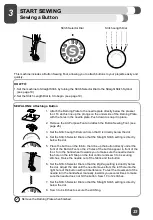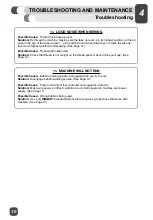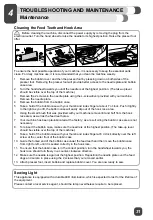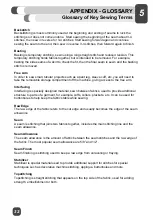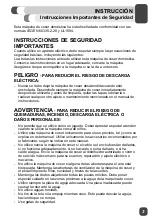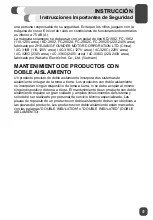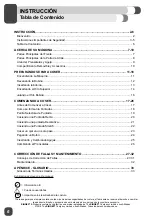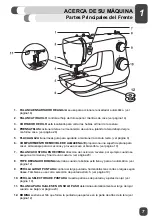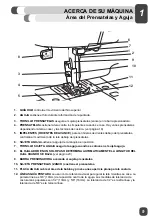
24
29
Troubleshooting
TROUBLESHOOTING AND MAINTENANCE
11. FABRIC PUCKERS
Possible Cause:
Top thread tension is too tight.
Solution:
Reduce the top thread tension. (See Page 18)
Possible Cause:
Stitch length is set too short for the fabric being sewn.
Solution:
Increase stitch length. (Go to www.singerco.com to view the Stitch Reference Guide)
Possible Cause:
Wrong style needle for fabric type.
Solution:
Use correct needle style. (Go to www.singerco.com to view the Stitch Reference
Guide)
Possible Cause:
Needle too large for fabric.
Solution:
Change to smaller size needle. (See Page 25)
12. FABRIC IS “TUNNELING” UNDER STITCHES
Possible Cause:
Fabric is not properly stabilized for the density of the stitches. (for example,
satin stitch applique)
Solution:
Add a fabric stabilizer underneath the fabric to help keep the stitches from tunneling in
together, forming a puckered ridge in fabric. (See Appendix in this manual)
13. MACHINE NOT FEEDING FABRIC
Possible Cause:
Presser foot lifter has not been lowered onto fabric after threading.
Solution:
Lower the presser foot lifter before starting to sew. Don’t “push” or “pull” the fabric as
you sew.
Possible Cause:
Feed dogs are covered by Darning Plate.
Solution:
If the feed dogs have been covered, the Darning Plate needs to be removed to resume
regular sewing.
Possible Cause:
Stitch length is set at zero.
Solution:
Increase stitch length setting.
10. STITCHES DISTORTED
Possible Cause:
“Pushing” or “pulling” the fabric.
Solution:
Don’t manually push/pull fabric in order to sew, but allow the machine’s feed teeth to
draw fabric under presser foot as you guide it.
Possible Cause:
Incorrect stitch length setting.
Solution:
Check for correct stitch length setting. (Go to www.singerco.com to view the Stitch
Reference Guide)
Possible Cause:
Stabilizer may be needed for technique.
Solution:
Place stabilizer underneath fabric. (See appendix in this manual)









